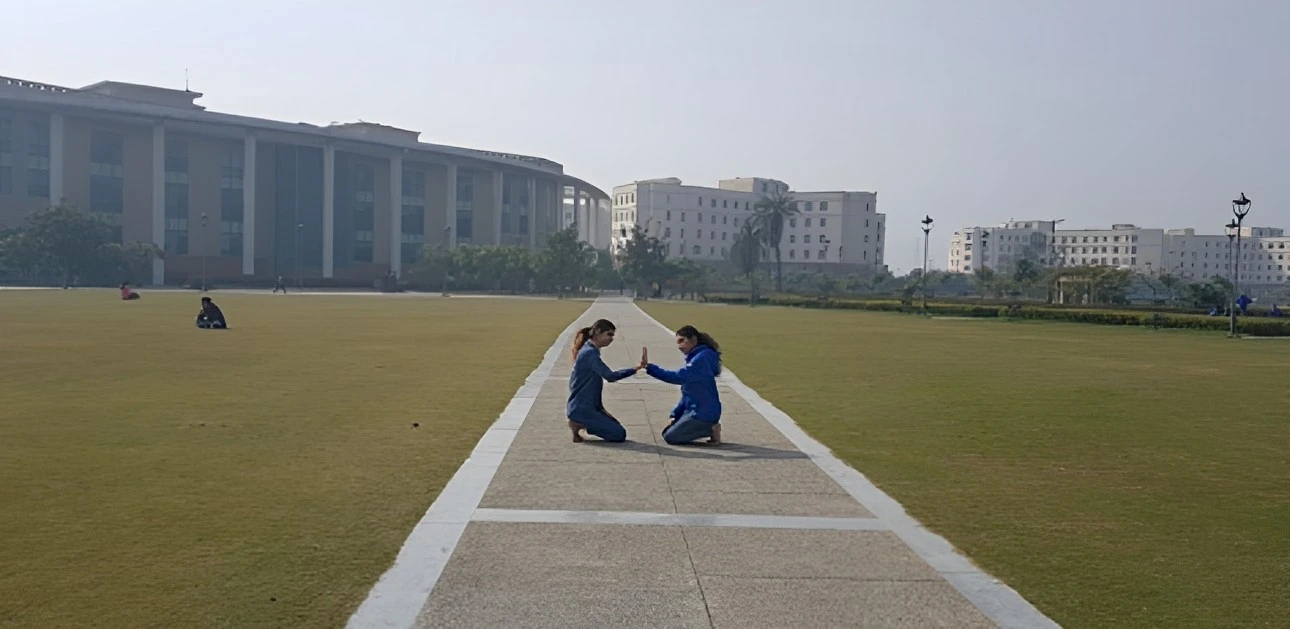Preserving the Past, Engineering the Future

Editorial / February 13, 2025
In human evolutionary timescales, the role of bridges is inextricably linked to the anthropocene. In both physical and social forms, it has played a pivotal role in furthering social development, trade, travel and the exchange of ideas. For aficionadoes, bridges also connect the past and present to shape the future.
As pioneers in bridge construction, the British have led from the front and were first off the block to realise the need to bridge physical divides.
At this juncture, the research done by Dr. Nitin Burud, Assistant Professor, Department of Civil Engineering, stands different. As a postdoctoral researcher working under the supervision of Dr. Imam Boulent and Dr. Marios Chryssanthopoulos at the University of Surrey, Dr. Burud was part of a project that uprooted a Victorian-era bridge from Dorset and transported it to a structural testing lab to study the effect of long term fatigue in a metallic bridge.
The United Kingdom has the oldest railway system in the world; the first locomotive-hauled public railway opened in the country in 1825. The island is also home to around 10,000 metallic railway bridges, many over 100 years old. Replacing these bridges is expensive and challenging, making it crucial to identify which bridges are weakened over time.
"The project focused on predicting and preventing fatigue failure, one of old bridges' most critical performance aspects. Fatigue failure in railway bridges happens when the repeated weight of trains and weather conditions result in stresses causing tiny cracks to form and grow over time, eventually leading to the bridge failure. The project reviewed existing fatigue assessment methods, in railway bridges to identify limitations and inherent uncertainties arising from the non-standardised designs," says Dr. Burud, who received his Ph.D. in structural engineering from the Indian Institute of Science, Bangalore.
Yetminster railway bridge was transported and mounted on a specialised test rig, with a reaction framework anchored to a concrete foundation using threaded rods and expansion anchors. Experiments were conducted both with and without the timber deck to assess its influence on structural behaviour.
A hydraulic jack and four load cells applied vertical loads, simulating real-world stress conditions. Large-scale bridge components were subjected to static and cyclic load using state-of-the-art laboratory equipments, including servo-hydraulic fatigue systems, strain gauges, displacement transducers, and digital image correlation systems. Additionally, small-scale specimens underwent chemical, tensile, and fatigue testing to determine material properties and establish material properties and S-N (Stress vs Number of cycles) curve parameters. The S-N curve is a graph that shows how the number of times (cycles) a material can be stressed before it breaks. Determining the S-N curve is important because it helps engineers predict how long a material will last under repeated stress, ensuring structure safety and reliability.
Using this data, the team worked on a promising new method called the TCD (theory of critical distances). This method was used to verify a range of bridge geometries and fatigue critical details using finite element models and engineering analysis.
"Test results will be used to benchmark and verify the analytical and numerical models to assess their predictive capability and accuracy. This study will play a crucial role in preserving and maintaining ageing railway infrastructure by addressing fatigue-induced failures and enhancing maintenance strategies. Over decades of service, these bridges endure cyclic stresses that can lead to structural degradation. By refining fatigue assessment methodologies and engineering standards, the research contributes to extending the operational lifespan of metallic bridges, reinforcing public safety and infrastructure sustainability," says Dr. Burud.
As part of the research, a Finite Element (FE) model was developed to simulate global structural responses and localised stress distributions in critical connections. This model facilitates fatigue assessment and informs targeted maintenance strategies for historical metallic railway bridges.
Throughout modern history, railway bridge materials have changed from cast iron in the early 1800s to wrought iron, which rapidly got displaced after the 1890s into mild steel, and then in 1937, high tensile steel made its foray. Until 1922, bridges in the UK didn't have a set standard; however, with the advent of the BS 153 Standards, bridges began to see a transformative change. However, the transition of bridges from riveting to welding took 230 years to happen. However, with the advent of automation in 1980s, bridge-making materials and designs witnessed a revolution in Britain.
The research funded by UK's Network Rail is aimed to highlight the critical importance of railway bridge safety through scientific research and innovation.
Dr. Nitin Burud's research highlights the evolving field of bridge engineering, where scientific advancements meet historical preservation. By analysing fatigue in Victorian-era railway bridges, the study improves understanding of aging infrastructure and introduces innovative methods for predictive maintenance. The use of advanced testing techniques and finite element modelling strengthens bridge safety and sustainability. As railway networks remain vital to transportation, this research helps ensure that historical metallic bridges continue to serve their purpose while integrating modern engineering solutions.
More Blogs

The Hawthornden Literary Retreat bestowed on Dr Sambudha Sen to complete the manuscript of a novel
Professor Sambudha Sen, Head of the Department of English at Shiv Nadar Institution of Eminence, Delhi-NCR, was awarded a residency at the...

The Power of the Moving Body
Movement is an innate bodily action that humans have been exhibiting for the longest time. Long before language was invented, the body was the...

How Does A Multi-Disciplinary Approach To Education Enhance Learning And Prepare Students For A Multi-Faceted World?
In today’s world, where businesses are changing almost every day, it is the responsibility of educational institutes to provide holistic...